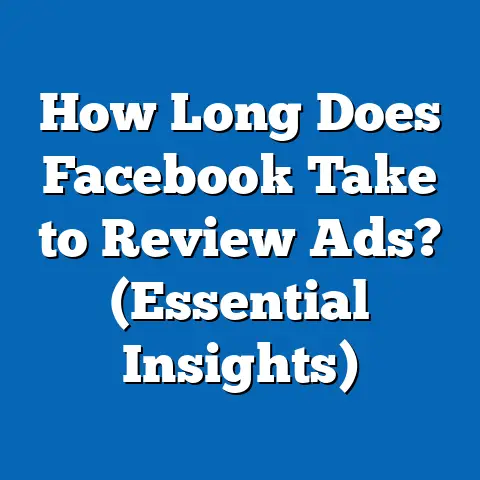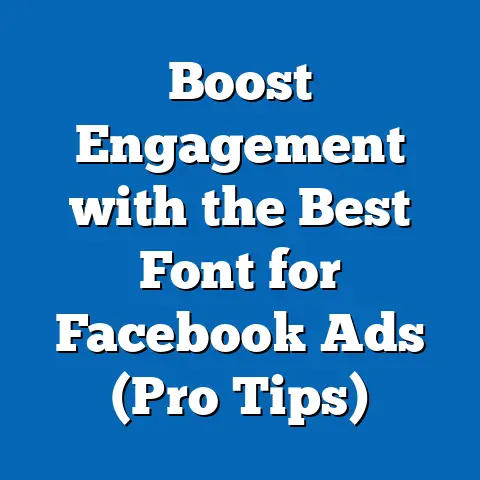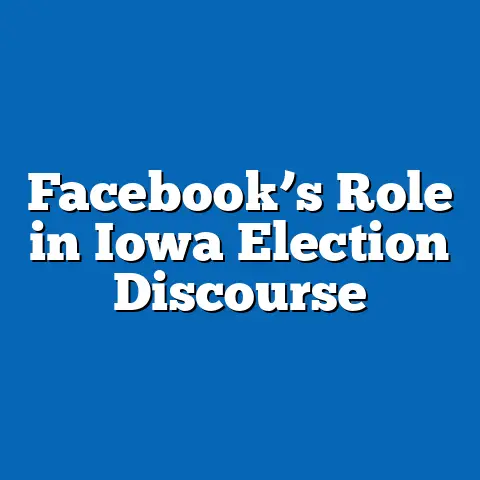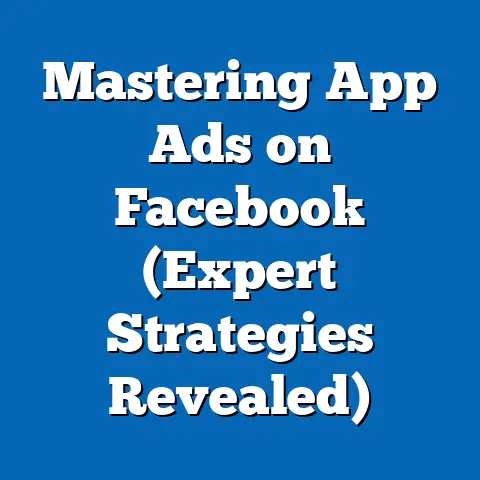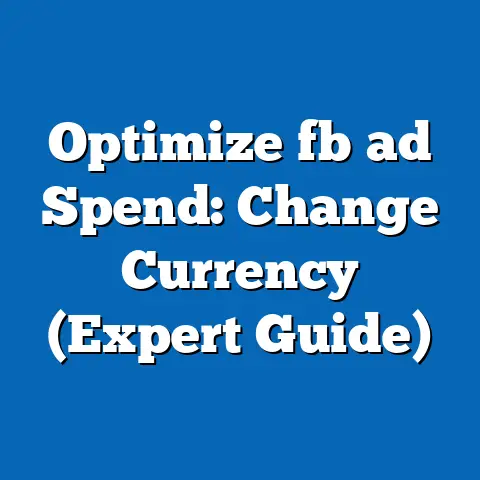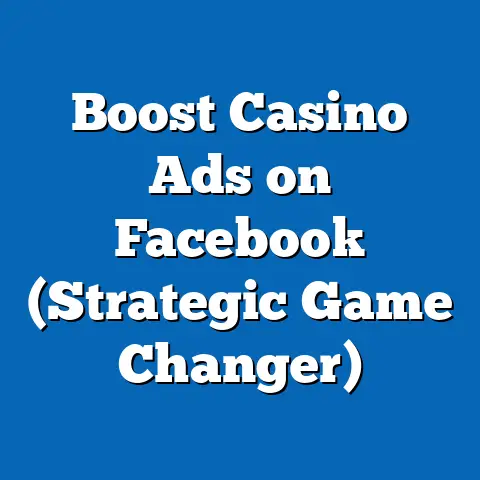Cutting Facebook Feed Ads (Proven Strategies Unveiled)
Imagine a bustling digital marketplace where businesses vie for attention in the endless scroll of the Facebook feed. I’ve seen firsthand how overwhelming this can be. Picture Sarah, a small business owner I once mentored, sitting at her desk, surrounded by charts and reports. She’s trying to navigate the complexities of Facebook advertising, her screen a blur of metrics, frustration etched on her face. The rising costs of her feed ads seem to yield diminishing returns. She’s pouring money into ads that feel like shouting into a void.
As she takes a sip of her coffee, her eye catches a competitor’s ad that seems to pop out of the feed, capturing attention and generating engagement. This moment sparks a realization: she needs to cut through the noise, to leverage proven strategies to make her Facebook feed ads work effectively.
Sarah’s story isn’t unique. Many businesses struggle to make their Facebook ads stand out. But the good news is that with the right knowledge and approach, it’s absolutely possible to achieve significant results. In this guide, I’ll unveil the strategies that can help businesses like Sarah’s thrive in the competitive landscape of Facebook advertising. I will share strategies I’ve personally used to help businesses transform their Facebook feed ads from cost centers to powerful lead generation machines.
1. Understanding the Facebook Feed Algorithm
Think of the Facebook feed algorithm as a gatekeeper, deciding which content gets seen and which gets buried. It’s not a simple black box, but understanding its basic principles is crucial for ad success.
-
How the Algorithm Works: The algorithm’s primary goal is to provide users with the most relevant and engaging content. It analyzes countless factors to predict what a user will find interesting, including their past interactions, the type of content they typically engage with, and the relationships they have with other users and Pages.
-
Engagement is King: Engagement metrics, such as likes, shares, comments, and saves, are powerful signals to the algorithm. High engagement indicates that the content is valuable and relevant, which leads to increased visibility. Ads that generate a lot of engagement are more likely to be shown to more users, often at a lower cost.
-
User Behavior Matters: The algorithm learns from user behavior. If a user consistently ignores ads from a particular business, the algorithm is less likely to show them those ads in the future. Conversely, if a user frequently interacts with ads from a specific industry, they are more likely to see similar ads.
How the Algorithm Works: The algorithm’s primary goal is to provide users with the most relevant and engaging content. It analyzes countless factors to predict what a user will find interesting, including their past interactions, the type of content they typically engage with, and the relationships they have with other users and Pages.
Engagement is King: Engagement metrics, such as likes, shares, comments, and saves, are powerful signals to the algorithm. High engagement indicates that the content is valuable and relevant, which leads to increased visibility. Ads that generate a lot of engagement are more likely to be shown to more users, often at a lower cost.
User Behavior Matters: The algorithm learns from user behavior. If a user consistently ignores ads from a particular business, the algorithm is less likely to show them those ads in the future. Conversely, if a user frequently interacts with ads from a specific industry, they are more likely to see similar ads.
Takeaway: Focus on creating ads that are genuinely engaging and relevant to your target audience. Encourage interaction through compelling copy, eye-catching visuals, and clear calls to action. The more users engage with your ads, the more the algorithm will favor them.
2. Defining Your Target Audience
Trying to reach everyone is a surefire way to reach no one. That’s why defining your target audience is paramount.
-
The Power of Segmentation: Audience segmentation involves dividing your potential customers into smaller, more specific groups based on shared characteristics, such as demographics, interests, behaviors, and purchase history. This allows you to tailor your ads to resonate with each group, increasing their effectiveness.
-
Facebook Audience Insights: This tool is a goldmine of information. It provides detailed insights into the demographics, interests, and behaviors of your target audience. You can use it to identify potential customers, understand their needs and preferences, and refine your targeting criteria. I’ve personally used Audience Insights to uncover hidden interests and demographics that dramatically improved my ad performance.
-
Creating Buyer Personas: A buyer persona is a semi-fictional representation of your ideal customer. It’s based on research and data about your existing customers and potential prospects. Creating buyer personas helps you understand your audience on a deeper level, allowing you to craft ads that speak directly to their needs, desires, and pain points.
The Power of Segmentation: Audience segmentation involves dividing your potential customers into smaller, more specific groups based on shared characteristics, such as demographics, interests, behaviors, and purchase history. This allows you to tailor your ads to resonate with each group, increasing their effectiveness.
Facebook Audience Insights: This tool is a goldmine of information. It provides detailed insights into the demographics, interests, and behaviors of your target audience. You can use it to identify potential customers, understand their needs and preferences, and refine your targeting criteria. I’ve personally used Audience Insights to uncover hidden interests and demographics that dramatically improved my ad performance.
Creating Buyer Personas: A buyer persona is a semi-fictional representation of your ideal customer. It’s based on research and data about your existing customers and potential prospects. Creating buyer personas helps you understand your audience on a deeper level, allowing you to craft ads that speak directly to their needs, desires, and pain points.
Example: Let’s say you’re selling organic baby food. Instead of targeting all parents, you might create a buyer persona for “Eco-Conscious Emily,” a 30-year-old mother who is passionate about sustainability and healthy eating. Your ads could then focus on the organic ingredients, eco-friendly packaging, and nutritional benefits of your baby food, appealing directly to Emily’s values.
Takeaway: Don’t rely on broad targeting. Dive deep into your audience data, create detailed buyer personas, and tailor your ads to resonate with specific segments. This will significantly improve your ad relevance and conversion rates.
3. Crafting Compelling Ad Copy
Your ad copy is your sales pitch. It’s your chance to grab attention, communicate your value proposition, and persuade users to take action.
-
Elements of Effective Ad Copy:
-
Clear Messaging: Your message should be concise, easy to understand, and immediately communicate the value of your product or service. Avoid jargon and focus on the benefits for the customer.
-
Emotional Appeal: Connect with your audience on an emotional level by addressing their needs, desires, or pain points. Use language that evokes feelings of excitement, trust, or urgency.
-
Call to Action (CTA): A strong CTA tells users exactly what you want them to do. Use clear and compelling language, such as “Shop Now,” “Learn More,” “Sign Up Today,” or “Get Your Free Trial.”
-
-
Analyzing Successful Ad Copy: Look at ads from businesses in your industry and analyze what makes them effective. Do they use humor, storytelling, or social proof? Do they focus on benefits or features? What kind of language do they use?
-
The Importance of A/B Testing: Never assume you know what will work best. A/B testing involves creating multiple versions of your ad copy and testing them against each other to see which performs better. Test different headlines, body text, CTAs, and even punctuation to optimize your ad copy for maximum impact.
Elements of Effective Ad Copy:
-
Clear Messaging: Your message should be concise, easy to understand, and immediately communicate the value of your product or service. Avoid jargon and focus on the benefits for the customer.
-
Emotional Appeal: Connect with your audience on an emotional level by addressing their needs, desires, or pain points. Use language that evokes feelings of excitement, trust, or urgency.
-
Call to Action (CTA): A strong CTA tells users exactly what you want them to do. Use clear and compelling language, such as “Shop Now,” “Learn More,” “Sign Up Today,” or “Get Your Free Trial.”
Clear Messaging: Your message should be concise, easy to understand, and immediately communicate the value of your product or service. Avoid jargon and focus on the benefits for the customer.
Emotional Appeal: Connect with your audience on an emotional level by addressing their needs, desires, or pain points. Use language that evokes feelings of excitement, trust, or urgency.
Call to Action (CTA): A strong CTA tells users exactly what you want them to do. Use clear and compelling language, such as “Shop Now,” “Learn More,” “Sign Up Today,” or “Get Your Free Trial.”
Analyzing Successful Ad Copy: Look at ads from businesses in your industry and analyze what makes them effective. Do they use humor, storytelling, or social proof? Do they focus on benefits or features? What kind of language do they use?
The Importance of A/B Testing: Never assume you know what will work best. A/B testing involves creating multiple versions of your ad copy and testing them against each other to see which performs better. Test different headlines, body text, CTAs, and even punctuation to optimize your ad copy for maximum impact.
Takeaway: Your ad copy should be clear, compelling, and emotionally resonant. Use strong CTAs to guide users towards your desired action. Continuously test different versions of your ad copy to optimize for maximum performance.
4. Creating Eye-Catching Visuals
In the visually saturated environment of the Facebook feed, your ad’s visuals are your first impression. They need to grab attention and communicate your message quickly and effectively.
-
Visuals That Perform Well:
-
Images: High-quality, relevant images that showcase your product or service in an appealing way. Use images that are visually striking and capture the essence of your brand.
-
Videos: Videos are incredibly engaging and can be used to tell stories, demonstrate product features, or provide valuable information. Keep videos short, attention-grabbing, and optimized for mobile viewing.
-
Carousels: Carousel ads allow you to showcase multiple products or features in a single ad unit. This format is great for e-commerce businesses or for highlighting different aspects of your brand.
-
-
Design Principles:
-
Contrast: Use contrast to make your visuals stand out. Combine light and dark colors, or use contrasting shapes and sizes.
-
Color Psychology: Colors evoke different emotions and associations. Choose colors that align with your brand and the message you’re trying to convey.
-
Branding Consistency: Maintain a consistent visual identity across all your ads. Use your brand colors, fonts, and logo to create a cohesive and recognizable brand presence.
-
Visuals That Perform Well:
-
Images: High-quality, relevant images that showcase your product or service in an appealing way. Use images that are visually striking and capture the essence of your brand.
-
Videos: Videos are incredibly engaging and can be used to tell stories, demonstrate product features, or provide valuable information. Keep videos short, attention-grabbing, and optimized for mobile viewing.
-
Carousels: Carousel ads allow you to showcase multiple products or features in a single ad unit. This format is great for e-commerce businesses or for highlighting different aspects of your brand.
Images: High-quality, relevant images that showcase your product or service in an appealing way. Use images that are visually striking and capture the essence of your brand.
Videos: Videos are incredibly engaging and can be used to tell stories, demonstrate product features, or provide valuable information. Keep videos short, attention-grabbing, and optimized for mobile viewing.
Carousels: Carousel ads allow you to showcase multiple products or features in a single ad unit. This format is great for e-commerce businesses or for highlighting different aspects of your brand.
Design Principles:
-
Contrast: Use contrast to make your visuals stand out. Combine light and dark colors, or use contrasting shapes and sizes.
-
Color Psychology: Colors evoke different emotions and associations. Choose colors that align with your brand and the message you’re trying to convey.
-
Branding Consistency: Maintain a consistent visual identity across all your ads. Use your brand colors, fonts, and logo to create a cohesive and recognizable brand presence.
Contrast: Use contrast to make your visuals stand out. Combine light and dark colors, or use contrasting shapes and sizes.
Color Psychology: Colors evoke different emotions and associations. Choose colors that align with your brand and the message you’re trying to convey.
Branding Consistency: Maintain a consistent visual identity across all your ads. Use your brand colors, fonts, and logo to create a cohesive and recognizable brand presence.
Example: I once worked with a local bakery that was struggling to get traction with their Facebook ads. Their initial ads used blurry, low-quality photos of their pastries. We replaced them with professional, mouth-watering photos that showcased the deliciousness of their products. The result was a dramatic increase in engagement and sales.
Takeaway: Invest in high-quality visuals that are visually appealing, relevant, and consistent with your brand. Use design principles to make your ads stand out and capture attention.
5. Utilizing Facebook’s Ad Formats
Facebook offers a variety of ad formats, each with its own strengths and weaknesses. Choosing the right format for your campaign goals is crucial for success.
-
Image Ads: Simple and effective for showcasing a single product or service.
-
Video Ads: Highly engaging and ideal for telling stories or demonstrating product features.
-
Slideshow Ads: A cost-effective alternative to video ads, using a series of images to create a dynamic visual experience.
-
Collection Ads: Designed for e-commerce businesses, allowing users to browse and purchase products directly from the ad.
Image Ads: Simple and effective for showcasing a single product or service.
Video Ads: Highly engaging and ideal for telling stories or demonstrating product features.
Slideshow Ads: A cost-effective alternative to video ads, using a series of images to create a dynamic visual experience.
Collection Ads: Designed for e-commerce businesses, allowing users to browse and purchase products directly from the ad.
Case Study: A clothing retailer I worked with initially focused solely on image ads. We experimented with collection ads, showcasing their latest clothing lines in a visually appealing and interactive format. The results were impressive, with a significant increase in click-through rates and sales.
Takeaway: Experiment with different ad formats to see what works best for your business and campaign goals. Consider your target audience, the type of product or service you’re promoting, and the message you’re trying to convey.
6. Implementing Retargeting Strategies
Not everyone who sees your ad will convert immediately. Retargeting allows you to re-engage previous visitors and move them further down the sales funnel.
-
What is Retargeting? Retargeting involves showing ads to people who have previously interacted with your website, app, or Facebook page. This could include visitors who viewed a specific product, added items to their cart but didn’t complete the purchase, or engaged with your content on social media.
-
Setting Up Retargeting with the Facebook Pixel: The Facebook Pixel is a small piece of code that you install on your website. It tracks user behavior and allows you to create custom audiences for retargeting campaigns.
-
Creating Compelling Retargeting Ads: Your retargeting ads should be tailored to the specific actions that users took on your website. For example, if someone viewed a particular product, you could show them an ad featuring that product with a special discount. If someone abandoned their cart, you could remind them about the items they left behind and offer free shipping.
What is Retargeting? Retargeting involves showing ads to people who have previously interacted with your website, app, or Facebook page. This could include visitors who viewed a specific product, added items to their cart but didn’t complete the purchase, or engaged with your content on social media.
Setting Up Retargeting with the Facebook Pixel: The Facebook Pixel is a small piece of code that you install on your website. It tracks user behavior and allows you to create custom audiences for retargeting campaigns.
Creating Compelling Retargeting Ads: Your retargeting ads should be tailored to the specific actions that users took on your website. For example, if someone viewed a particular product, you could show them an ad featuring that product with a special discount. If someone abandoned their cart, you could remind them about the items they left behind and offer free shipping.
Takeaway: Retargeting is a powerful tool for re-engaging potential customers and driving conversions. Use the Facebook Pixel to track user behavior and create custom audiences for your retargeting campaigns. Tailor your ads to the specific actions that users took on your website to maximize their effectiveness.
7. Analyzing Performance Metrics
Data is your compass in the world of Facebook advertising. Monitoring your performance metrics is essential for understanding what’s working, what’s not, and how to optimize your campaigns for maximum ROI.
-
Key Performance Indicators (KPIs):
-
Reach: The number of unique people who saw your ad.
-
Impressions: The number of times your ad was displayed.
-
Click-Through Rate (CTR): The percentage of people who saw your ad and clicked on it.
-
Cost Per Click (CPC): The amount you pay each time someone clicks on your ad.
-
Conversion Rate: The percentage of people who clicked on your ad and completed a desired action, such as making a purchase or signing up for a newsletter.
-
Cost Per Acquisition (CPA): The amount you pay for each conversion.
-
-
Interpreting Data from Facebook Ads Manager: Facebook Ads Manager provides a wealth of data about your ad performance. Use this data to identify trends, patterns, and areas for improvement.
-
Optimizing Based on Analytics: Based on your analytics, you can make adjustments to your targeting, ad copy, visuals, bidding strategies, and budget allocation. Continuously test and refine your campaigns to optimize for maximum performance.
Key Performance Indicators (KPIs):
-
Reach: The number of unique people who saw your ad.
-
Impressions: The number of times your ad was displayed.
-
Click-Through Rate (CTR): The percentage of people who saw your ad and clicked on it.
-
Cost Per Click (CPC): The amount you pay each time someone clicks on your ad.
-
Conversion Rate: The percentage of people who clicked on your ad and completed a desired action, such as making a purchase or signing up for a newsletter.
-
Cost Per Acquisition (CPA): The amount you pay for each conversion.
Reach: The number of unique people who saw your ad.
Impressions: The number of times your ad was displayed.
Click-Through Rate (CTR): The percentage of people who saw your ad and clicked on it.
Cost Per Click (CPC): The amount you pay each time someone clicks on your ad.
Conversion Rate: The percentage of people who clicked on your ad and completed a desired action, such as making a purchase or signing up for a newsletter.
Cost Per Acquisition (CPA): The amount you pay for each conversion.
Interpreting Data from Facebook Ads Manager: Facebook Ads Manager provides a wealth of data about your ad performance. Use this data to identify trends, patterns, and areas for improvement.
Optimizing Based on Analytics: Based on your analytics, you can make adjustments to your targeting, ad copy, visuals, bidding strategies, and budget allocation. Continuously test and refine your campaigns to optimize for maximum performance.
Takeaway: Regularly monitor your performance metrics in Facebook Ads Manager. Use this data to identify areas for improvement and optimize your campaigns for maximum ROI.
8. Budgeting and Bidding Strategies
Effective budget management is crucial for maximizing your ROI on Facebook advertising.
-
Budget Allocation Strategies:
-
Daily Budget: Set a fixed amount that you’re willing to spend each day.
-
Lifetime Budget: Set a total amount that you’re willing to spend over the entire duration of your campaign.
-
-
Bidding Strategies:
-
Automatic Bidding: Facebook automatically sets your bids based on your budget and campaign goals.
-
Manual Bidding: You manually set your bids for each ad set.
-
-
Maximizing ROI:
-
Start Small: Begin with a small budget and gradually increase it as you see positive results.
-
Focus on High-Performing Ads: Allocate more of your budget to ads that are generating the best results.
-
Monitor Your Costs: Keep a close eye on your CPC and CPA to ensure that you’re getting a good return on your investment.
-
Budget Allocation Strategies:
-
Daily Budget: Set a fixed amount that you’re willing to spend each day.
-
Lifetime Budget: Set a total amount that you’re willing to spend over the entire duration of your campaign.
Daily Budget: Set a fixed amount that you’re willing to spend each day.
Lifetime Budget: Set a total amount that you’re willing to spend over the entire duration of your campaign.
Bidding Strategies:
-
Automatic Bidding: Facebook automatically sets your bids based on your budget and campaign goals.
-
Manual Bidding: You manually set your bids for each ad set.
Automatic Bidding: Facebook automatically sets your bids based on your budget and campaign goals.
Manual Bidding: You manually set your bids for each ad set.
Maximizing ROI:
-
Start Small: Begin with a small budget and gradually increase it as you see positive results.
-
Focus on High-Performing Ads: Allocate more of your budget to ads that are generating the best results.
-
Monitor Your Costs: Keep a close eye on your CPC and CPA to ensure that you’re getting a good return on your investment.
Start Small: Begin with a small budget and gradually increase it as you see positive results.
Focus on High-Performing Ads: Allocate more of your budget to ads that are generating the best results.
Monitor Your Costs: Keep a close eye on your CPC and CPA to ensure that you’re getting a good return on your investment.
Takeaway: Choose a budget allocation strategy that aligns with your campaign goals and risk tolerance. Experiment with different bidding strategies to see what works best for your business. Continuously monitor your costs and optimize your budget allocation to maximize your ROI.
9. Staying Updated with Trends and Changes
The world of Facebook advertising is constantly evolving. Staying informed about the latest trends and changes is essential for maintaining a competitive edge.
-
Facebook Algorithm Updates: Facebook regularly updates its algorithm, which can impact the performance of your ads. Stay informed about these updates and adjust your strategies accordingly.
-
Advertising Policies: Facebook has strict advertising policies that you must adhere to. Regularly review these policies to ensure that your ads are compliant.
-
Resources for Staying Informed:
-
Facebook’s Business Help Center: Provides information about Facebook’s advertising features, policies, and best practices.
-
Industry Blogs and Websites: Offer insights, tips, and tutorials on Facebook advertising.
-
Webinars and Conferences: Provide opportunities to learn from industry experts and network with other marketers.
-
Facebook Algorithm Updates: Facebook regularly updates its algorithm, which can impact the performance of your ads. Stay informed about these updates and adjust your strategies accordingly.
Advertising Policies: Facebook has strict advertising policies that you must adhere to. Regularly review these policies to ensure that your ads are compliant.
Resources for Staying Informed:
-
Facebook’s Business Help Center: Provides information about Facebook’s advertising features, policies, and best practices.
-
Industry Blogs and Websites: Offer insights, tips, and tutorials on Facebook advertising.
-
Webinars and Conferences: Provide opportunities to learn from industry experts and network with other marketers.
Facebook’s Business Help Center: Provides information about Facebook’s advertising features, policies, and best practices.
Industry Blogs and Websites: Offer insights, tips, and tutorials on Facebook advertising.
Webinars and Conferences: Provide opportunities to learn from industry experts and network with other marketers.
Takeaway: Commit to continuous learning and stay informed about the latest trends and changes in Facebook advertising. Adapt your strategies as needed to maintain a competitive edge.
Conclusion
Cutting through the clutter of Facebook feed ads is achievable with the right strategies. By understanding the algorithm, defining your audience, crafting compelling content, utilizing diverse ad formats, implementing retargeting strategies, continuously analyzing performance, and staying updated with trends and changes, you can drive effective results.
Remember Sarah, the small business owner I mentioned at the beginning? After implementing these strategies, she saw a dramatic improvement in her ad performance. Her click-through rates increased, her conversion costs decreased, and her sales skyrocketed.
Success in Facebook advertising is within reach if you apply these proven strategies diligently. Don’t be afraid to experiment, test, and adapt. With the right approach, you can transform your Facebook feed ads from cost centers to powerful lead generation machines.

